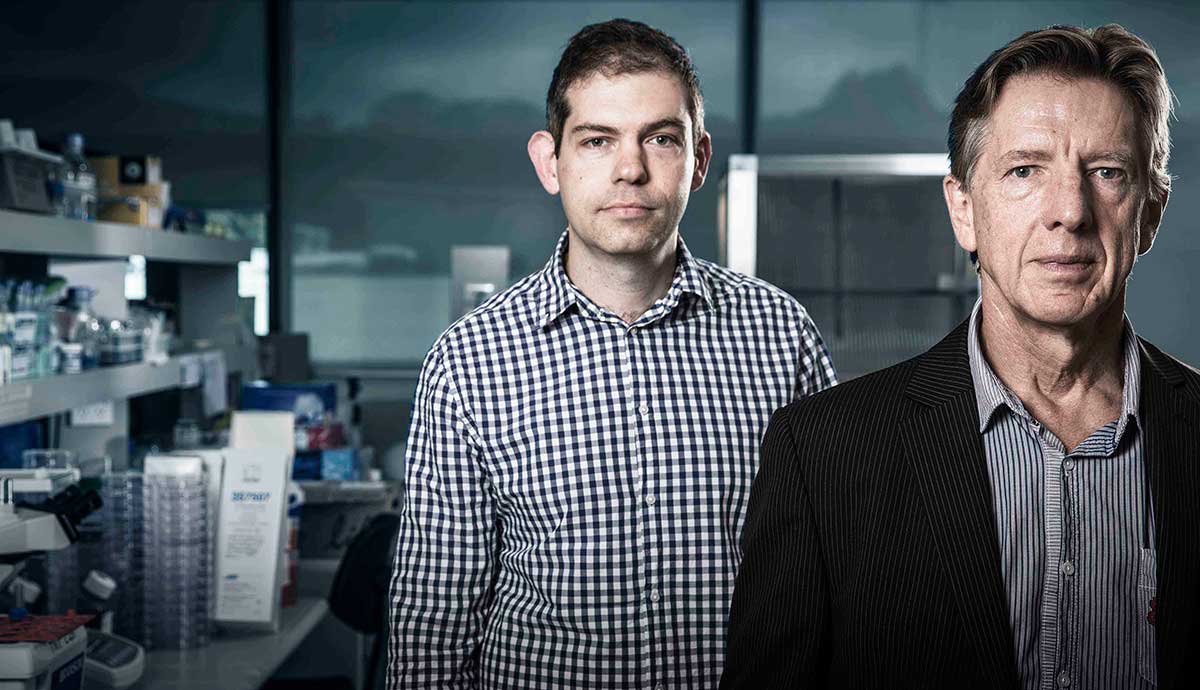December 7, 2016
Scientific breakthrough reveals potential cause of multiple sclerosis
Discovery helps UOW researchers to target autoimmune response behind disease
A scientific breakthrough from researchers at the Illawarra Health and Medical Research Institute (IHMRI) and the University of Wollongong (UOW) could provide a greater understanding of what causes multiple sclerosis and help target the autoimmune disease as soon as it develops.
Professor Roger Truscott and Dr Michael Friedrich have been studying the key structural proteins of myelin. Myelin is a substance that coats axons – the wiring cables of nerve cells – and acts as an electrical insulator, allowing much greater speed in the conduction of nerve impulses.
The researchers tracked the decomposition of myelin basic protein (MBP) in the brains of individuals with and without MS, focusing on the cerebellum, a part of the brain that regulates motor movements and is particularly affected by the disease.
In research published in the peer-reviewed journal, Acta Neuropathologica Communications, they found myelin basic protein is long lasting in all people, even those without MS, and breaks down as part of the ageing process. This decomposition does not apparently affect the ability of myelin to function as an insulator of electrical signalling in the brain.
However, in people with the disease, MBP breaks down differently, which may be the characteristic that triggers an autoimmune response.
MS is an autoimmune disease where the body attacks its own nerves, with symptoms including muscular spasms, visual disturbances and problems with weakness, coordination, balance and functioning of the arms and legs.
“We can distinguish the myelin basic protein in MS patients from people who do not have MS,” Professor Truscott said.
“The structure of the MBP from MS patients had two regions where specific changes have accumulated. We hypothesize, based on the novel structures formed here, that these two regions provoke an immune response.
MS affects more than 23,000 people in Australia and is often diagnosed while patients are in their 30s. There is no cure and the drugs available typically target the inflammatory response, rather than the cause of the disease.
Professor Truscott says the discovery could represent a breakthrough in identifying the cause of MS and thus help researchers work toward preventing the disease.
“We have a definite MS target. In the future, drugs could be designed to bind specifically to these two regions on MP and thus potentially stop the autoimmune response,” he said.
“It is important to emphasise that this is not a cure for MS, however for the first time we have a target.”
The research was funded in part by the National Health and Medical Research Council of Australia.
The Illawarra Health and Medical Research Institute is a joint initiative of UOW and the Illawarra Shoalhaven Local Health District.
